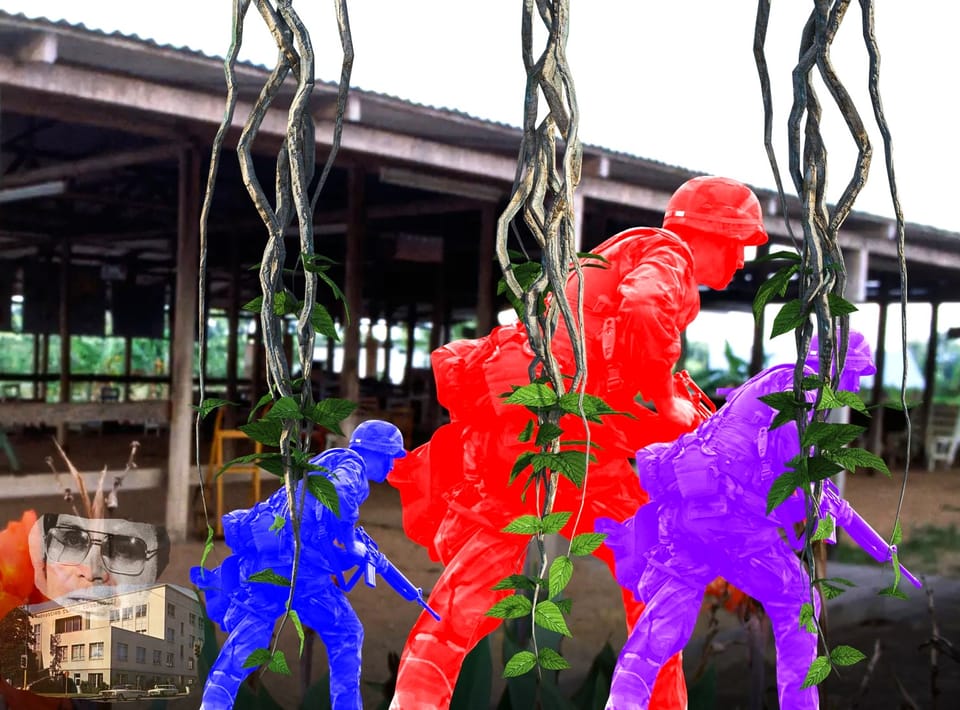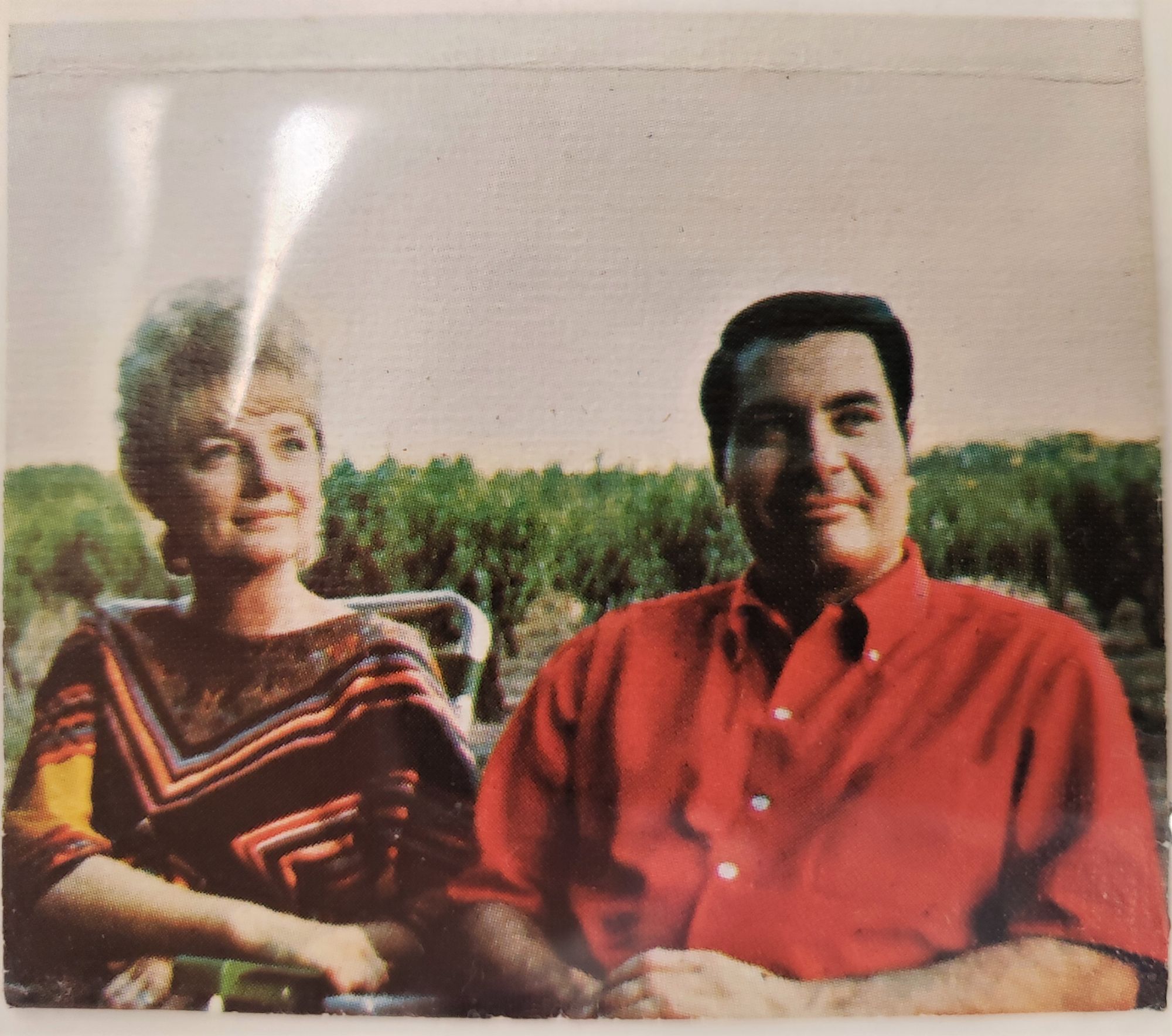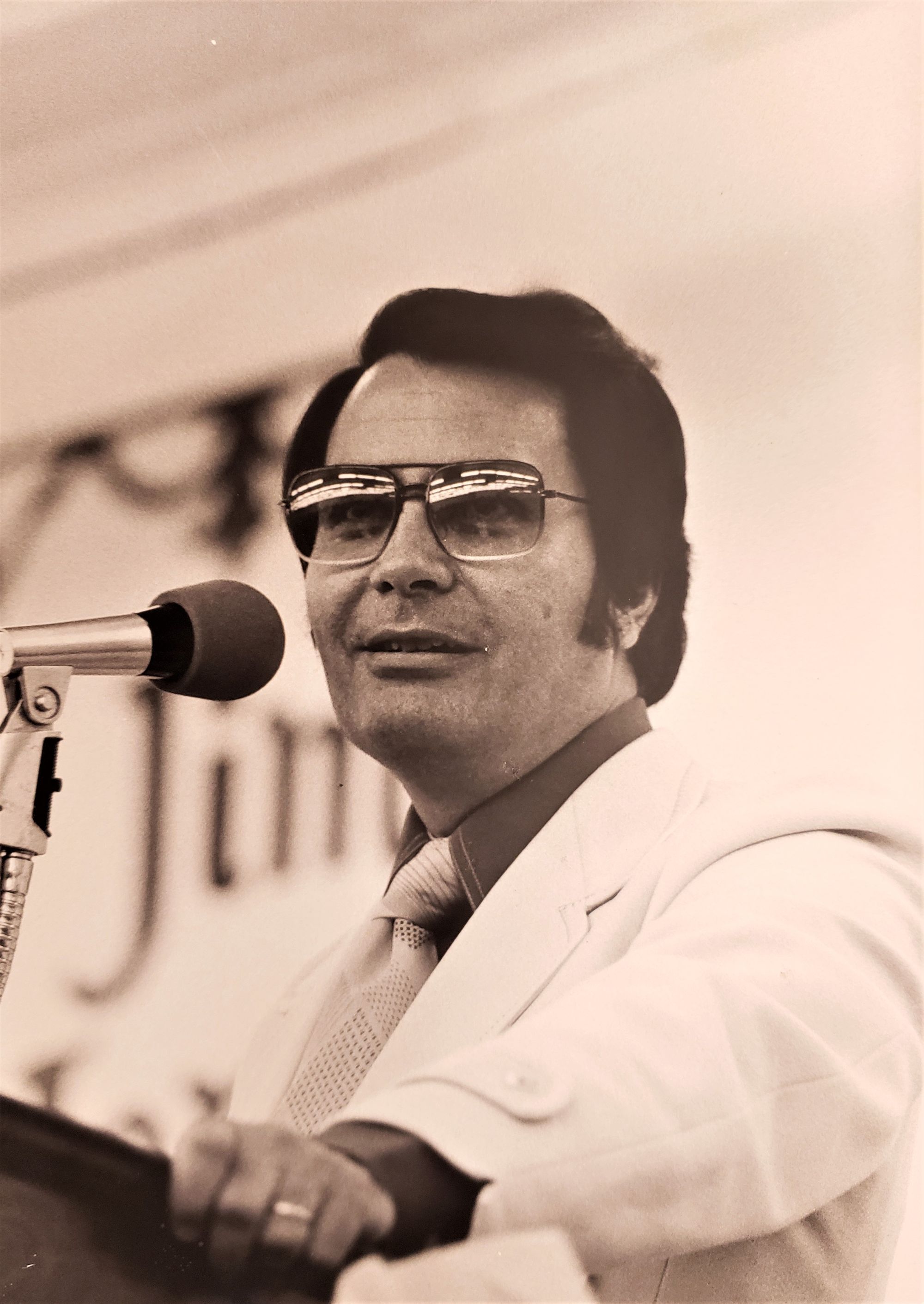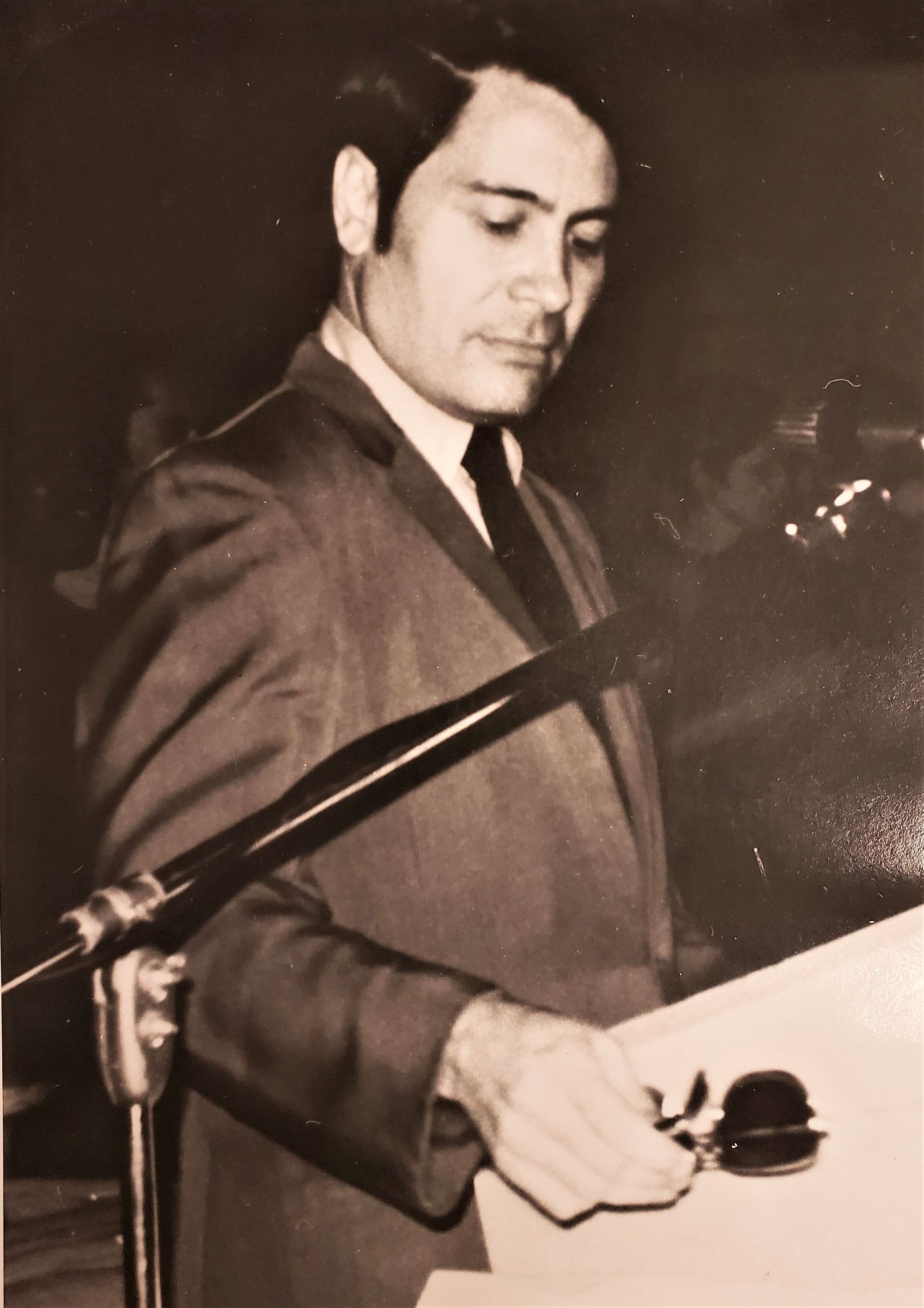Insidious Persuasion: Regarding Three Photos of the Reverend Jim Jones

On November 18, 1978, nearly all 900 members of the Peoples Temple in Guyana, a "church" founded by Jim Jones (an un-ordained pastor), died in an apparent mass suicide. I remember well the news coverage from that time. So, on the occasion that I discovered the Jones Family Memorabilia Collection, in the archives of San Diego State University, I was delighted and eager to explore its contents.
The collection is deeply fascinating, consisting of numerous photos from the Peoples Temple in San Francisco, as well as images from their famed and tragic Guyana phase. Here, I entertain reflections on three images, which exemplify the life and times of Jim Jones, self-proclaimed preacher and cult leader of infamy.
In the Era of Instant Cameras
Among historians and investigators, it's widely agreed that Jones started his first Peoples Temple endeavor in Indiana during the 1950s, eventually relocating to Redwood City in Mendocino County, California, and establishing the organization's largest membership in San Francisco during the 1970s. The visual impact of this movement, with its tragedy and confusion, comes from the staggering number of photos taken at the San Francisco church and, later, in Guyana at the Peoples Temple agricultural commune.
From the archival collection, I recall seeing numerous pictures of family events and church scenes, enraptured congregants listening to their leader, the Jones children smiling on Christmas morning or sitting dutifully near their father's pulpit. Also in the archives, we find a report card documenting Jones's unremarkable college career. As for the photo record, it tells of a cult leader who ascended almost without interruption, manipulation being his true talent rather than academics. Yet, we are faced with a mystery. Aside from boundless charisma and arrogance, what enabled Jones to persuade hundreds of people to surrender their lives, and the lives of their children, to him?
Posed with his wife, Marceline, he looks every bit the bland suburbanite. Yet, there is quite a bit more to the story, as we shall see.

The Media Persona
Although he attended Indiana University Bloomington, and eventually completed a bachelor's degree at Butler University, I have found no record of any religious training for Jones, apart from his entrance into the Methodist Church and involvement with various Christian organizations. Did he simply awake one morning, don preacher's attire, and emerge fully formed as a renegade reverend?
Here, we find the second image, more closely resembling his media persona, the modified pompadour and disturbing gaze, just visible through his sunglasses. It's likely that this photo is the most famous in the collection, giving us an idea of life at the Peoples Temple, the "Rainbow Congregation" that took San Francisco by storm.

Jim Jones: Grand Jury Foreman (and Chair of the Housing Authority)
Interestingly, the media rarely mentioned that Jones was more than a theatrical preacher and sexual predator--yes, that as well. During the late 1960s and early 70s, he served as the grand jury foreman for Mendocino County and also chaired San Francisco's housing authority. My source is an article in the September 30, 2000 edition of The Berkley Daily Planet, wherein Michelle Locke of the Associated Press states the following:
Over the next year, Stoen got to know Jones, who was on the board of directors of the legal aid office, one of his many official posts. Jones also was foreman of the Mendocino County grand jury and would later be appointed chair of San Francisco’s housing authority.
Locke's article is entitled, "Jonestown Lawyer Comes Back to Face His Demons in Mendocino County, this Time as a Prosecutor" and tells the story of Timothy Stoen, an attorney for the Peoples Temple who later became a county prosecutor in Mendocino, California–a strange career trajectory, to be sure.
At any rate, we find that the crazy preacher, famed for suiciding his entire cult in the jungles of Guyana, was actually part of the government establishment with considerable authority and access. Isn't that interesting? Jones was also known to have associated with First Lady Rosalynn Carter, the same first lady who was acquainted with John Wayne Gacy, the children's birthday clown convicted of torturing and murdering over 30 young men. Add to that the gunfire that killed Congressman Leo Ryan on the tarmac near Jonestown–-just prior to the massacre--and the whole situation becomes, well, a tad questionable. Oh, and don't forget that Jones and his wife were able to adopt eight children with no questions asked by the court, apparently.
The media rarely, if ever, connected the many dots of his questionable activities. Had the evening news ever mentioned that Jones was a court official and government appointee, with ties to the White House--and a great fondness for other people's children--the public might have had a better view of the truth.
Founding Jonestown: An Agricultural Experiment in Guyana
Being a cult leader certainly comes with challenges, not the least of which is bad publicity. In 1977, New West Magazine reported that the Peoples Temple had nearly 20,000 members, adherents who referred to Jones as "Father" and willingly surrendered their assets to him. The problem was the prominence of certain followers, some of whom hailed from wealthy families with powerful law firms at their disposal. As for the poorer members (many elderly African Americans) who handed Jones their meager belongings, their plight cast a dark shadow over his utopia. So, with his legendary paranoia fully inflamed, Jones gathered up the church and departed that same year. This is where the question of logistics comes to mind, a subject largely ignored by the media.
Jones apparently had no trouble bringing some 900 people into a foreign country to take up residence, establishing an agricultural experiment on land whose ownership remains unclear, Guyana having transferred from British rule to independence in 1966. Perhaps the good reverend simply used his government connections--and conveniently died along with his cult followers/prisoners on November 18, 1978. Something tells me there's more to the story, important details hidden in the jungle that now engulfs "Jonestown." True, it was an experiment of dramatic proportions, a grand and sadistic study in human behavior. But who, exactly, was the experimenter and who were the subjects?
Of the photos I did not include, there is a bit to say. Jones apparently had a penchant for owning disabled dogs, the picture of a German shepherd in a wheelchair coming to mind. All things considered, this really makes me cringe and wonder, but I digress. Although he was said to have tortured and killed animals as a child, that portion of research remains to be explored and fully analyzed.
The collection of photos, housed at the San Diego State University Archives, is rich and sheds light on a remarkable tragedy. Was it a government-sponsored experiment in social engineering, a prisoner dilemma game, or simply a lunatic preacher's dystopia? We may never know the entirety of things. Suffice it to say, however, that the circular relationship among court officials, politicians, a lunatic preacher, a convicted mass murderer, and a first lady of the United States is more than a little troubling.
In the last photo, we see Reverend Jim looking a bit more low-key, prior to donning his leisure suits and belting out those famous sermonic tirades, the power of which led hundreds to a horrifying end. Interestingly, in this final image, we see him reaching for those sunglasses. Jones lived from 1931 to 1978.

For Further Reading:
As I mentioned earlier, most media sources paint a woefully incomplete picture of Jones, ignoring the fact that he worked very closely with politicians and the court system, often interacting as a peer rather than an outsider seeking favors. This is a crucial issue. In the area of academic research, we find scholars working to explain the social and philosophical dimensions of his life, and the impact of the Peoples Temple, often in such abstraction as to obscure the overarching point; there is indeed far more to the story than meets the eye.
Chidester, David. Salvation and Suicide: An Interpretation of Jim Jones, Jonestown, and the Peoples Temple (Bloomington and Indianapolis: Indiana University Press, 1988).
Guinn, Jeff. The Road to Jonestown: Jim Jones and the Peoples Temple (New York, NY: Simon and Schuster, 2017).
Klineman, George. The Cult that Died: The Tragedy of Jim Jones and the People's Temple (New York, NY: Putnam, 1980).
Moore, Rebecca. Peoples Temple and Jonestown in the Twenty-First Century (Cambridge: Cambridge University Press, 2022).
Jones Family Memorabilia Collection:
San Diego State Special Collections & University Archives
Identifier MS-0516
All photos are housed at the San Diego State University Archives and reproduced here for educational purposes, under the Fair Use Clause of US Copyright Law.